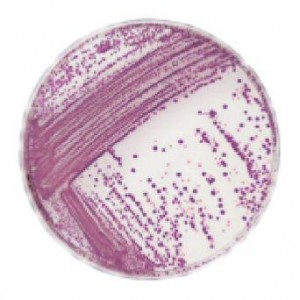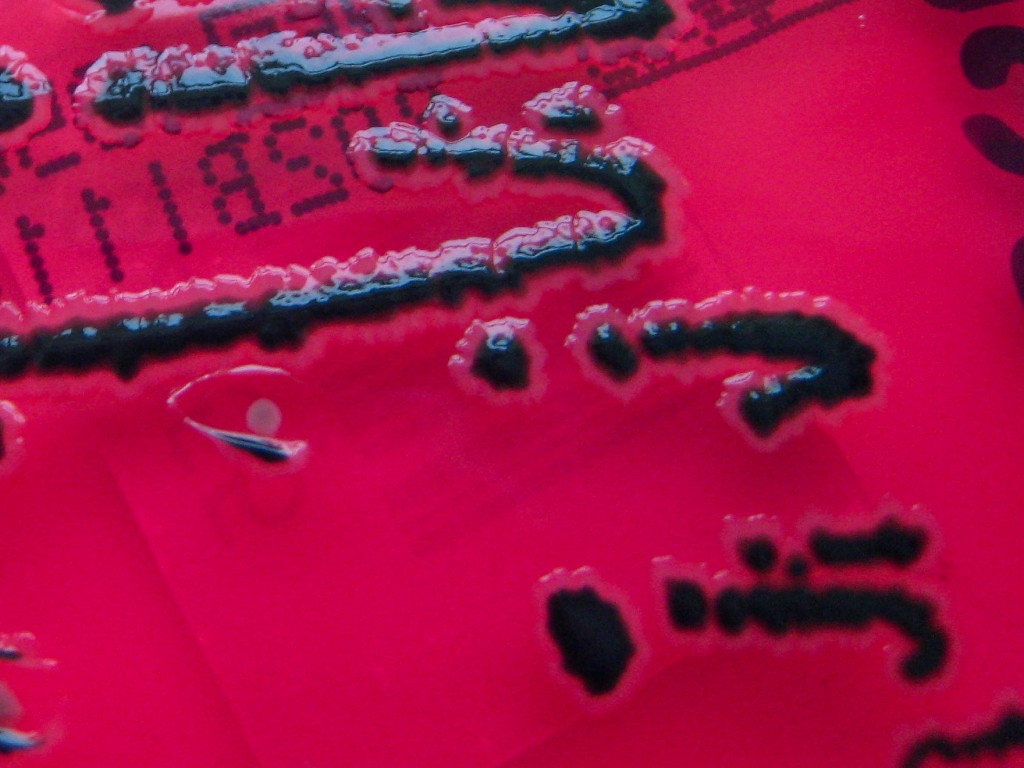Salmonella is the genus name of a large group of bacteria which however contains only two distinct species. Unlike many bacterial genus groups the distinctions among the many, at last count 2,501, individually recognized types of Salmonella are not species but instead are known as serovars, or serological variants. These variants are recognized by differing antigens expressed on the surface of the bacteria instead of the variations in DNA sequence that mark different species. Serovars are generally named for the geographic location of their first isolation. The differing serovars, with a few important exceptions, are not relevant to the vast majority of people as they rarely change the course of the infection and subsequent disease, again, there are several important exceptions, but they are of critical value to epidemiologists and others who track and combat the large scale outbreak forms of these infections which occur in the United States on a yearly basis.
Salmonella Basics
Unlike many bacterial species, Salmonella is not a normal inhabitant of the human body, nor does it require a host to be otherwise immune compromised or ill to cause infection and illness. The bacteria is widespread the in environment, especially among animals. Even otherwise perfectly healthy people can and do become infected and sickened when exposed to the Salmonella bacteria. Infection and illness is more common in children, perhaps because they require a smaller dose of the bacteria to become ill, but also because they are more likely to put things that may be contaminated into their mouths. People who are immune compromised due to illness or medications used to treat some illnesses, as well as those who are elderly are also at greater risk for severe disease and complications, including in rare cases, death. Salmonella is not a rare infection in the United States as it is estimated that over a million cases occur in the United States yearly, however, only about 60,000+ are actually diagnosed as most cases are self-limiting, meaning that the infection passes without medical intervention, and of those who do seek treatment and diagnosis, few are tested either because tests are not ordered or because patients balk at the collection of feces required to perform such testing.

Salmonella Illness
Salmonella most commonly causes a gastrointestinal illness characterized by diarrhea, fever, and abdominal cramps. It usually starts quite quickly following the ingestion of infected material and also usually resolves completely on its own within 5-7 days. Around 20,000+ people per year will require hospitalization in the United States usually due to severe dehydration associated with the diarrhea, and again, these people are usually otherwise compromised by age or illness. However, in compromised hosts, the infection may spread beyond the intestines into the blood stream, causing sepsis and potentially infecting other organs. These rare cases can be quite serious and even fatal, but of the over 1 million infections, only about 450 people per year will die of disseminated disease in the United States, although this manifestation is much more common and deadly in Africa.

Typhoid Fever
A much more serious form of Salmonella infection occurs when a person is infected with Salmonella enterica enterica Typhi. This infection is quite rare in the United States today but it was not uncommon in the past before widespread changes in hygiene occurred in the late 19th and early 20th centuries. Typhoid fever is endemic in much of the world today, including all of the Americas from Mexico south to the Antarctic, all of Africa, and all of southern Asia including China and some of the former Soviet republics. This is, therefore, a disease most commonly associated with travelers to these parts of the world who ingest infected material. It infects almost 6,000 Americans per year, and most of those, at least 75%, acquire the infection outside of the United States, but they can then pass it to others upon their return. The disease is characterized by a debilitating fever and headache without diarrhea. A rose colored rash is also frequently seen in patients. It can be fatal if left untreated but people do recover on their own as well. Typhoid Mary, who was an actual historical personage, lives on in popular culture form in movies and even comic books. Mary is perhaps most famous in this age for being forcibly quarantined in a prison hospital for decades as a means of preventing infection of others in the era before antibiotics. Mary was what is known as a “carrier” in that while she carried and shed the typhoid fever bacteria, she did not herself become ill.

